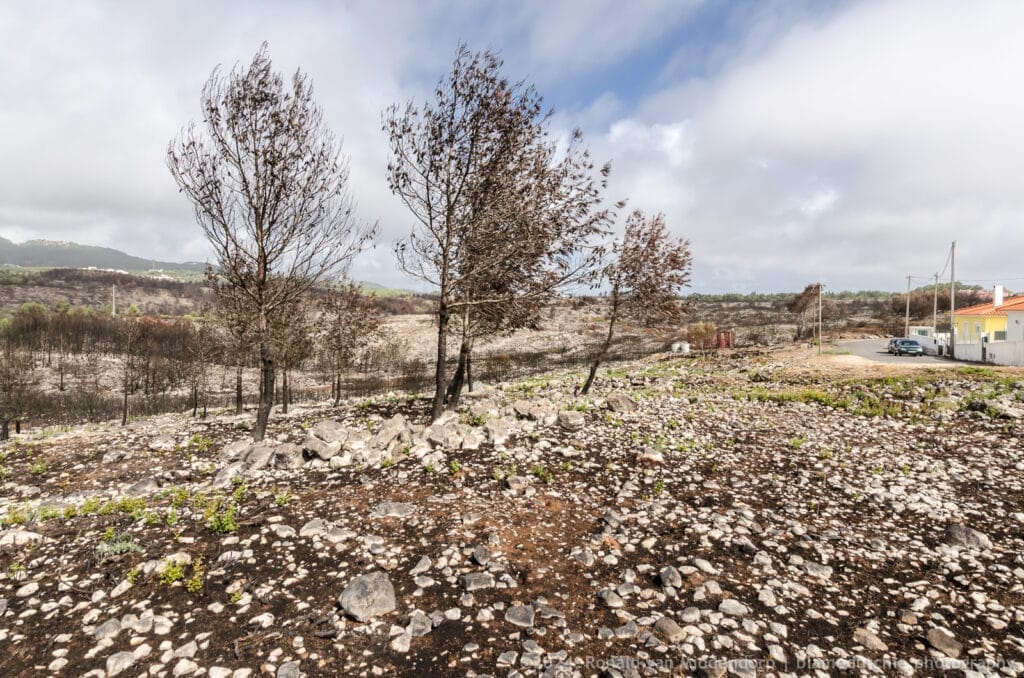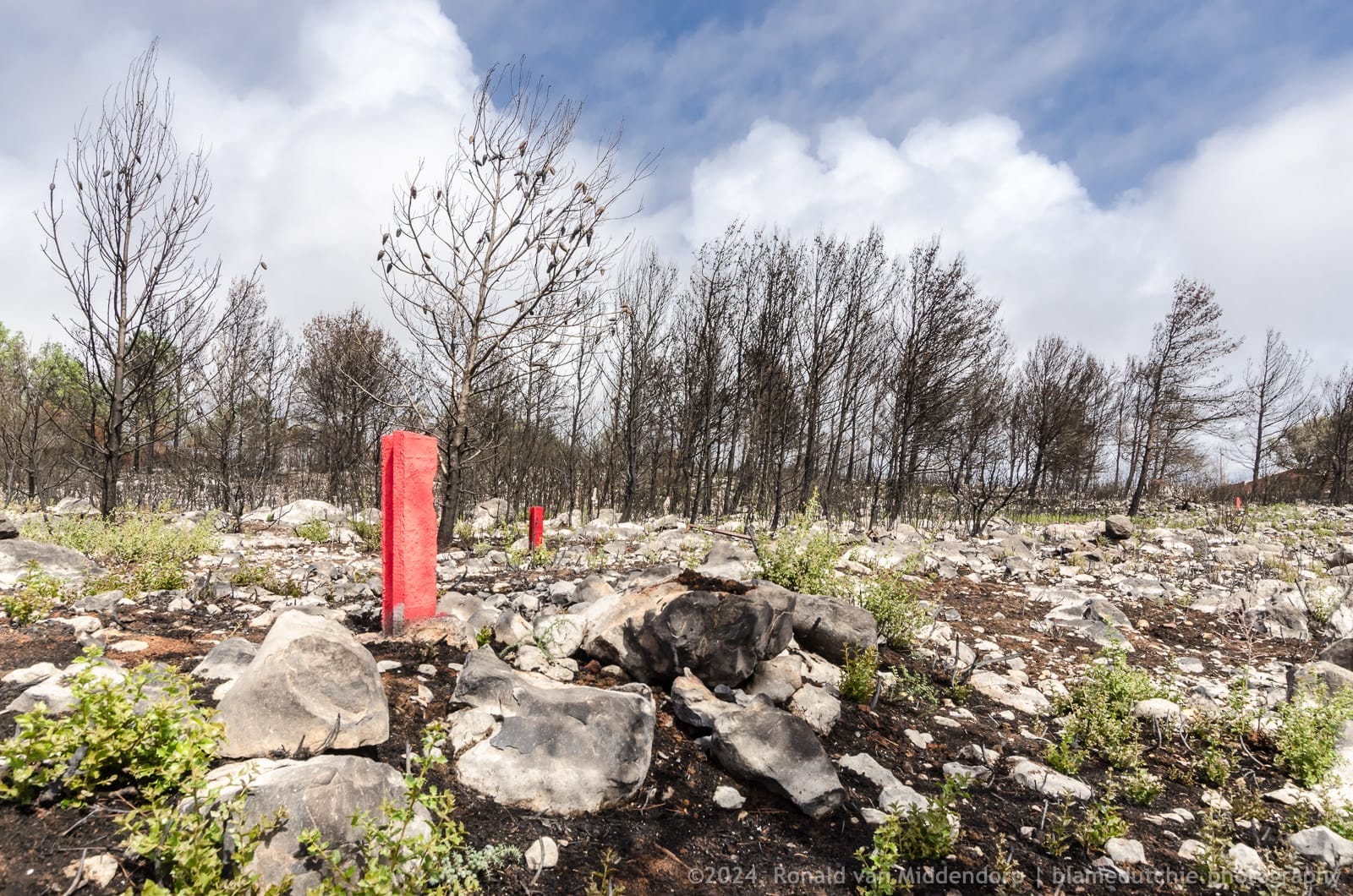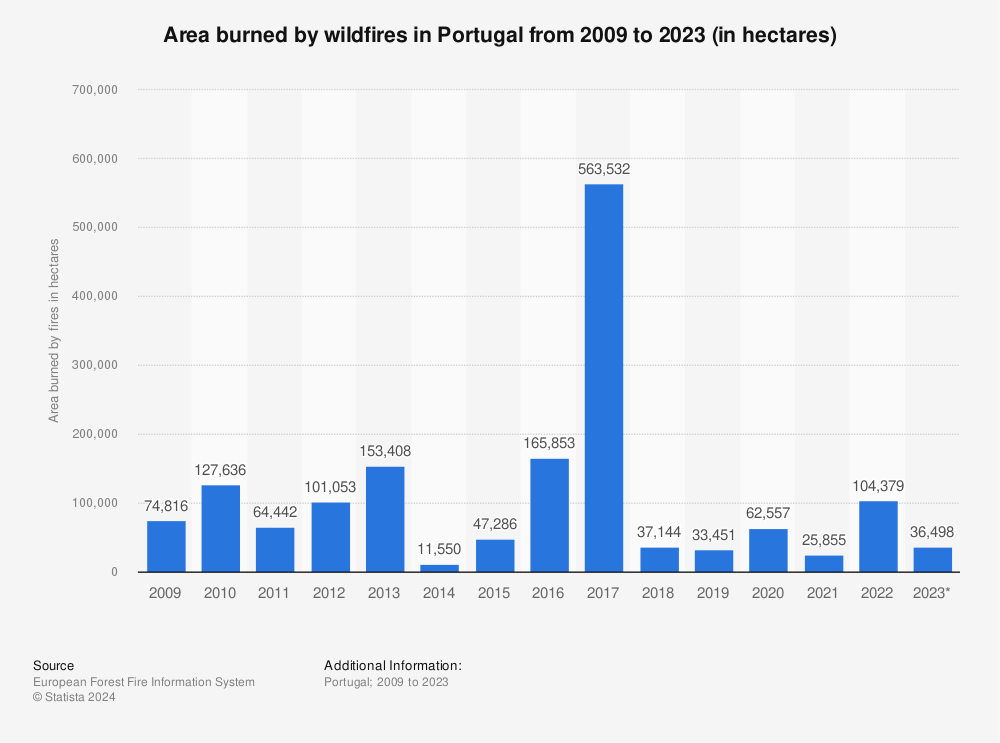Every year during summer, hectares of rural and forest area fall victim to wildfires. Some years it’s worse, like in 2017 when a confirmed 66 people lost their lives, while in other years the situation is less intense. But, as everybody knows, it always burns.
The effect on the population can be devastating. In some areas, people can’t breathe for weeks without filling their longues with soot. They hardly sleep, afraid to be caught by surprise, and loose their house, company, animals or their lives. And let’s not forget the firefighters, underpaid, understaffed and always on call.
Facts and data
In, what many consider the post-truth era, it is not always easy to find the facts that are at the root of the wildfire problem. And even if we have the facts and all the data is readily available, interpretation is hard and not seldomly leads to the consensus that reaching consensus is impossible. Reports are not always written in a clear manner, which plays a roll in a diversity in the interpretation of the fact. The need to blame people or institutions after a particularly devastating wildfire (season) for the damage, becomes more important that solving the problems and stand in the way of constructive dialogue to come to workable solutions and thus prevention.
Especially after the terrible wildfires in 2017, we all have the images of burned-out cars on a high-way etched in our minds forever, the need to blame and prosecute was severe.
The terrible combination of drought, heat and wind from both thunderstorms (ITC Report, 2017) and offshore Hurricane Ophelia caused fires that were difficult, and in some areas impossible, to contain. This lead not only to a huge loss in terms of hectares of land and property, but also to the death of many people and animals. At first, politicians seemed to focus on the economical damage and looking for a party where to put the blame, but the social damage – in my opinion – outweighs the financial damage. Not only were families and communities hurt in many ways, many people lost what little trust they had in the institutions that were supposed to protect and support them, not in the least the government.
This reignited (no pun intended) the notion that drastic preventive measures were really necessary and had to be implemented fast.
The government requested technical reports, to analyse the cause, propagation and subsequent handling of the fires. An independent technical commission was formed to study the events and recommend solutions that may prevent future disasters.
What’s next?
Government reforms were announced, there were recommendations on the operational level of civil protection structure and firefighting response as well as on fuel management measures, protection of residential and industrial areas and public forestry investments.
The commission suggested a public institute to coordinate all entities that contribute to dealing with rural fires (resolution 12/2018). A system for integrated management of rural fires was established, its purpose protecting the population, territory and its assets from forest fires. Also, it was pointed out that information such as forecasts and maps of structural fire danger, should me made available to all involved.
Considering nobody is an island, and (governmental) institutions, laws and regulations are not enough to address all that needs to be done, the programme “Aldeia segura, pessoas seguras” was adopted to increase risk awareness with a strong focus on prevention, warning, evacuation of settlements and preparation of shelters.
Many of the suggestions were followed by resolutions being put in practice. However, it is too early to tell if it is enough to prevent future disaster.
On my walk in the Murches area, I saw that fuel management around houses and settlements has definitely prevented damage to property.

The root
To me it seems obvious that, in order to implement true preventive measures, it is of utmost importance to not only understand what propagates wildfires, in other words what keeps them burning, but emphasize what causes them. Doing that, we come to the facts that, apparently, not many are willing to address.
Already in reports from 2016 and 2017, human activity and behaviors were identified as the causes of the majority of Portuguese forest fire ignitions that occurred in the last three decades, whether by deliberate actions, negligence, accident or carelessness. Yet, most of the published research rarely mentions the human activity component in terms of human behavior such as incendiarism and the negligent use of fire.
Combining the information in various reports over a longer period of time, it becomes clear that:
- 0.6% of total ignitions of investigated forest fires are due to natural causes, such as lightning strikes
- 36.0% of fires are caused by intentional use of fire, such as for agricultural purposes or land clearing
- 35.7% of fires are attributed to deliberate acts of arson
- 14.6% of fires are caused by the rekindling of previous fires
Negligent behaviour is a significant contributing factor to human-caused fires, although it is impossible to put a percentage to it. After all, there are not that many people who openly come out to say they have done something stupid.
Some fires have been attributed to contact between electricity lines and vegetation, but again there is no exact percentage and one could argue that this cause should be filed under negligent behaviour. Anybody can see when trees are growing too close to power lines and notify the authority. Or decide not to.
Last year, I heard a man complain that his parents are simply not capable to keep the area surrounding their quinta clear from vegetation. They are too old, he said. “They don’t have a big place, mind you, but it is still a lot of work for old people.”
I decided to just listen and not say anything. Making friends is already not my strongest point. But I could not help thinking: “What if you and your sons get in your big SUV, drive over right now and get to work? You know, help them protect their quintal and the little bit of livestock they might have?”
But hey, I understand; complaining is a lot easier. When things go wrong, one can simply blame the government, the weather or immigrants.
Nature is resilient
Luckily, nature is resilient and in some ways even relies on fires to thrive. As a boy, I watched heathlands being burned in a controlled manner to make them grow back stronger. Of course, there are the many animals that can’t get away fast enough, the vegetable gardens, the hiking trails and camping grounds that fall victim to human-made disasters. The millions of insects; how many bee colonies have perished this year?






































